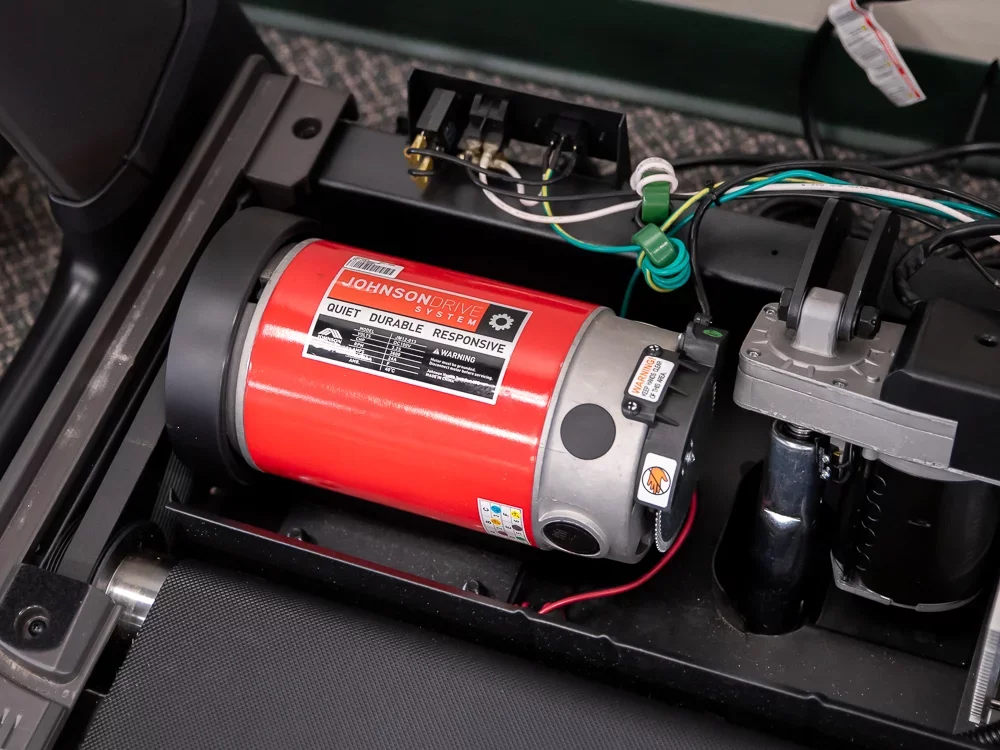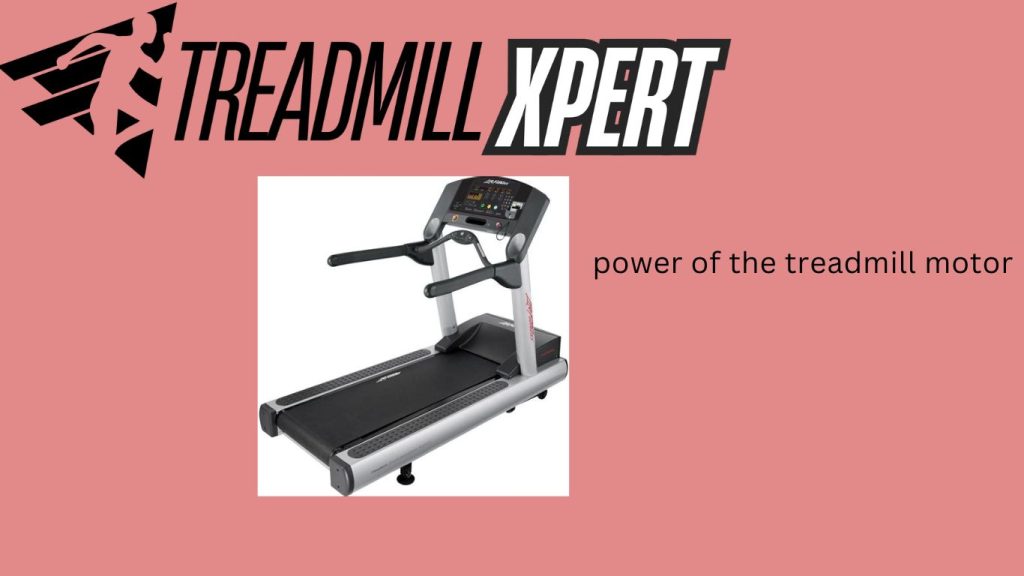What is the power of the treadmill motor?
A good treadmill horsepower (HP) rating depends on its intended use and the user’s weight during exercise. It is worth remembering that continuous duty horsepower (CHP) is a more reliable measure than peak horsepower. CHP indicates the motor’s sustained power output, which is more relevant for long-term use and continuous workouts.
What is the power of the treadmill motor For walking or light jogging?
The HP of the treadmill motor For walking or light jogging is 2.0 to 2.5 HP motors,
What is the treadmill motor’s power for regular running or multiple users?
The horsepower of the treadmill motor is recommended for regular running or multiple users: 3.0 to 3.5 HP motors.
What is the treadmill motor’s power for intense training or heavier users?
HP power of the treadmill motor for intense training or heavier users, 3.5 to 4.0 HP motors are ideal.
What are the factors of the treadmill motor?
Other factors to consider include user weight, frequency of use, top speed required, and inline capabilities.
What are home users of a treadmill motor with horsepower (HP)?
A treadmill motor with 2.5 to 3.0 horsepower (HP) is generally excellent and effective for most home users. This range provides enough power for regular walking, jogging, and light running for most individuals’ workouts. The ideal HP can vary depending on your needs, weight, and usage intensity.
Also, it’s worth noting that continuous duty horsepower (CHP) is a more reliable measure than peak HP for home usage. it is used for the CHP rating when choosing a treadmill with a good HP motor.

What is the difference between HP motors and branded and local treadmills?
The difference between HP motors and branded and local treadmills can be significant. Here’s a breakdown:
-
Branded Treadmills:
-
Higher-quality motors.
-
More accurate HP ratings (usually continuous duty horsepower – CHP).
-
Better durability and longevity.
-
Usually quieter operation.
-
More efficient power usage.
-
Longer warranties.
-
-
Local or Generic Treadmills:
-
Lower-quality motors.
-
HP ratings that can be less reliable or inflated (often using peak HP ratings, which can be misleading).
-
Shorter lifespans.
-
Noisier operation.
-
Potentially less energy-efficient.
-
What is the critical difference between branded and local motors?
Key differences are Rating system, Quality, Efficiency, Accuracy, and Price.
-
Rating system:
Branded treadmills often use CHP, while local ones may use peak HP, which can appear higher but don’t accurately reflect sustained performance or work. -
Quality:
Branded motors are typically made with better materials, stricter quality control, and quality guarantee. -
Efficiency:
Higher-end branded motors often run cooler and use less energy for the same output and good efficiency. -
Accuracy:
The stated HP of branded treadmills is generally more accurate, reliable, and quality. -
Price:
Local treadmills are usually cheaper, but the motor quality often reflects, and prices are higher due to the best quality. -
When comparing, it’s important to look beyond just the HP number and consider factors like motor type, warranty, and user reviews. A branded motor is good.
Ideal Motor Power for a Treadmill:
The ideal motor power depends on several factors, including weight, intended use, and exercise frequency. Here’s a general guide to help you determine the ideal motor power:
-
Additional factors to consider:
-
User weight: During a workout, add 0.5 HP for users over 200 pounds.
-
Frequency of use: More frequent use requires a higher HP motor.
-
Incline features: Treadmills with an incline may require more power during workouts.
-
Look for: Continuous duty horsepower (CHP) ratings, which give a more accurate picture of the motor’s sustained performance.
-
Why is the horsepower (HP) of a treadmill motor essential?
The horsepower (HP) is important for several reasons: Performance, Durability, User weight capacity, Workout intensity, Multiple users, Noise level, Speed range, Incline capability, Energy efficiency, and Future-proofing.
-
Performance:
Especially at higher speeds or inclines, higher HP allows for smoother operation. It provides consistent speed without lagging or jerking. -
Durability:
A more powerful motor doesn’t have to work hard, potentially lasting longer. It can handle more stress, leading to fewer breakdowns. -
User weight capacity:
Higher HP motors can better support heavier users for workouts. -
Workout intensity:
More powerful motors are necessary for high-intensity workouts or running for workouts. -
Multiple users:
Households with multiple users benefit from higher HP to handle varied usage. -
Noise level:
Generally, higher HP motors can run more quietly at the same speeds and make less noise than lower HP motors. -
Speed range:
More powerful motors typically offer higher top and adequate speed. -
Incline capability:
When the treadmill is inclined, higher HP is needed to maintain speed. -
Energy efficiency:
An appropriately sized motor for your needs can be more energy-efficient than an underpowered one. -
Future-proofing:
A higher HP motor allows for more intense workouts as your fitness improves and is effective. -
While HP is critical, it’s not the only factor to consider. Treadmill motor quality, belt size, and overall build also play crucial roles in a treadmill’s performance and longevity.

Some important points:
SAFETY FIRS
Safety is important for repairing, like Unplugging the treadmill before any repair work, Waiting 24 hours after unplugging for capacitors to discharge, Keeping the workspace dry and clear, Having proper tools ready, and Documenting and photographing everything you disassemble.
Common Motor Issues
1. Motor Won’t Start
Some Possible causes are a Failed start capacitor, Worn brushes, Controller board issues, and Seized bearings.
Troubleshooting steps include Checking the power supply and connection, Inspecting motor brushes for wear, Testing the start capacitor with a multimeter, and Listening for humming/clicking sounds.
2. Motor Runs Inconsistently
Possible causes include Dirty commutator, Loose connections, Worn brushes, and Belt issues
What are the tools for repairing the motor?
Fixes include Cleaning the commutator with an electronic cleaner, Tightening all connections, Replacing
-
Motor Brushes
Regularly check and replace motor brushes to maintain efficient motor performance. -
Checking and Adjusting Belt Tension
Proper belt tension is crucial for smooth operation and avoiding unnecessary wear.
Basic Repair Tools Needed:
-
Multimeter: For testing electrical components.
-
Screwdrivers: Both Phillips and flathead for general repairs.
-
Allen Wrench Set: For disassembling parts of the treadmill.
-
Cleaning Supplies: Electronic cleaner and a cloth for keeping parts free of dust and debris.
-
Replacement Parts: Such as brushes and capacitors.
-
Work Gloves and Protective Eyewear: To ensure safety during repairs.
